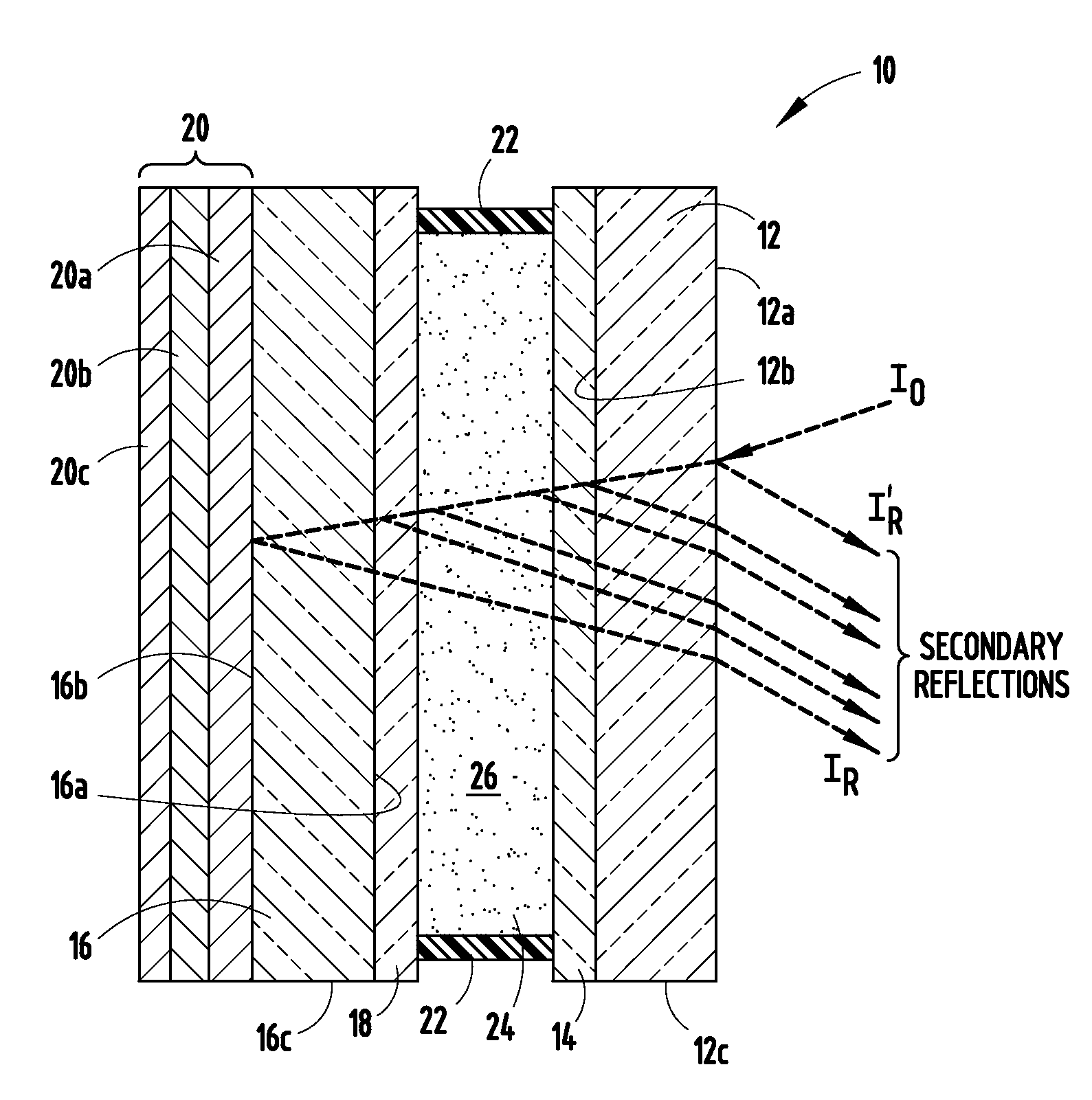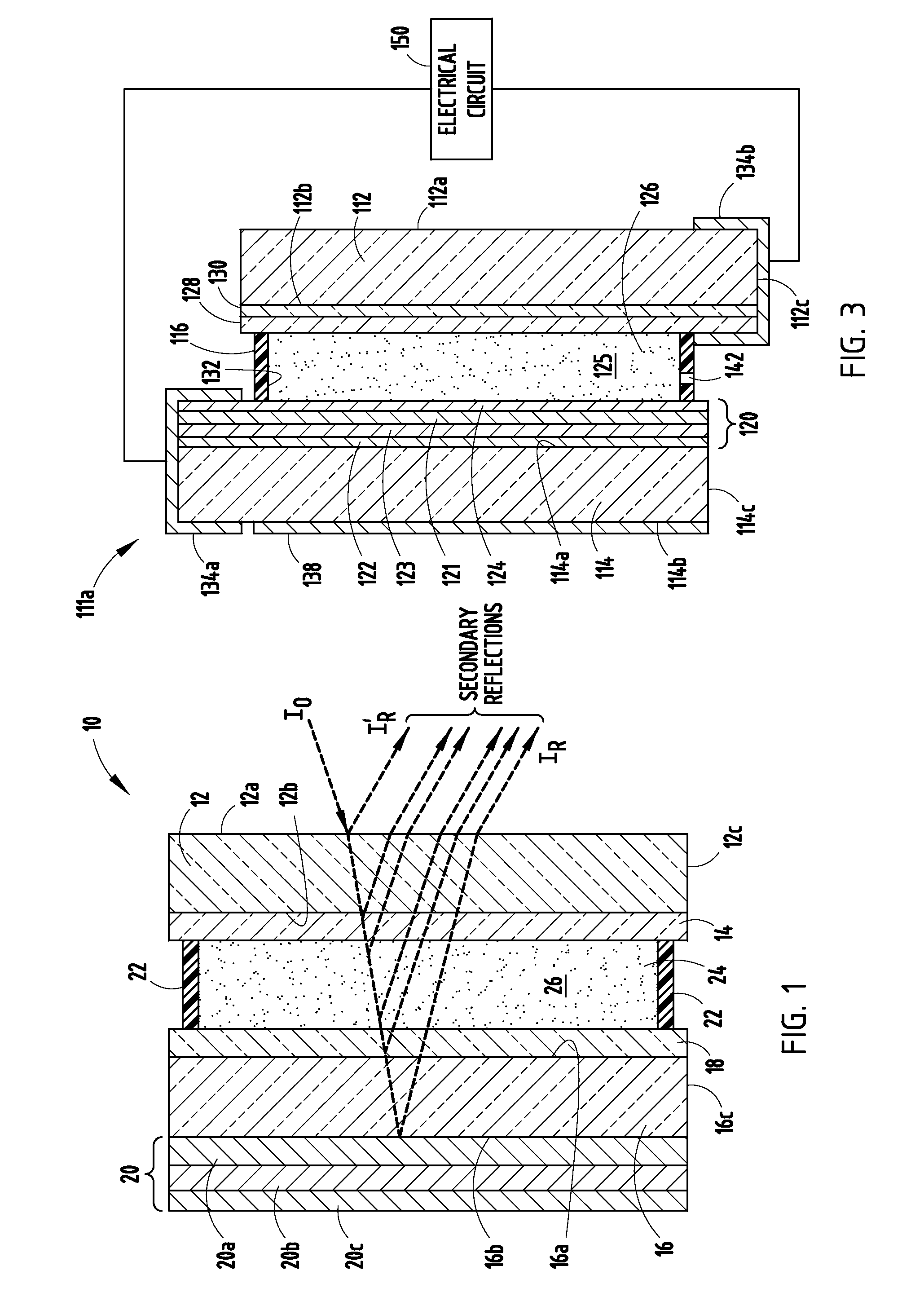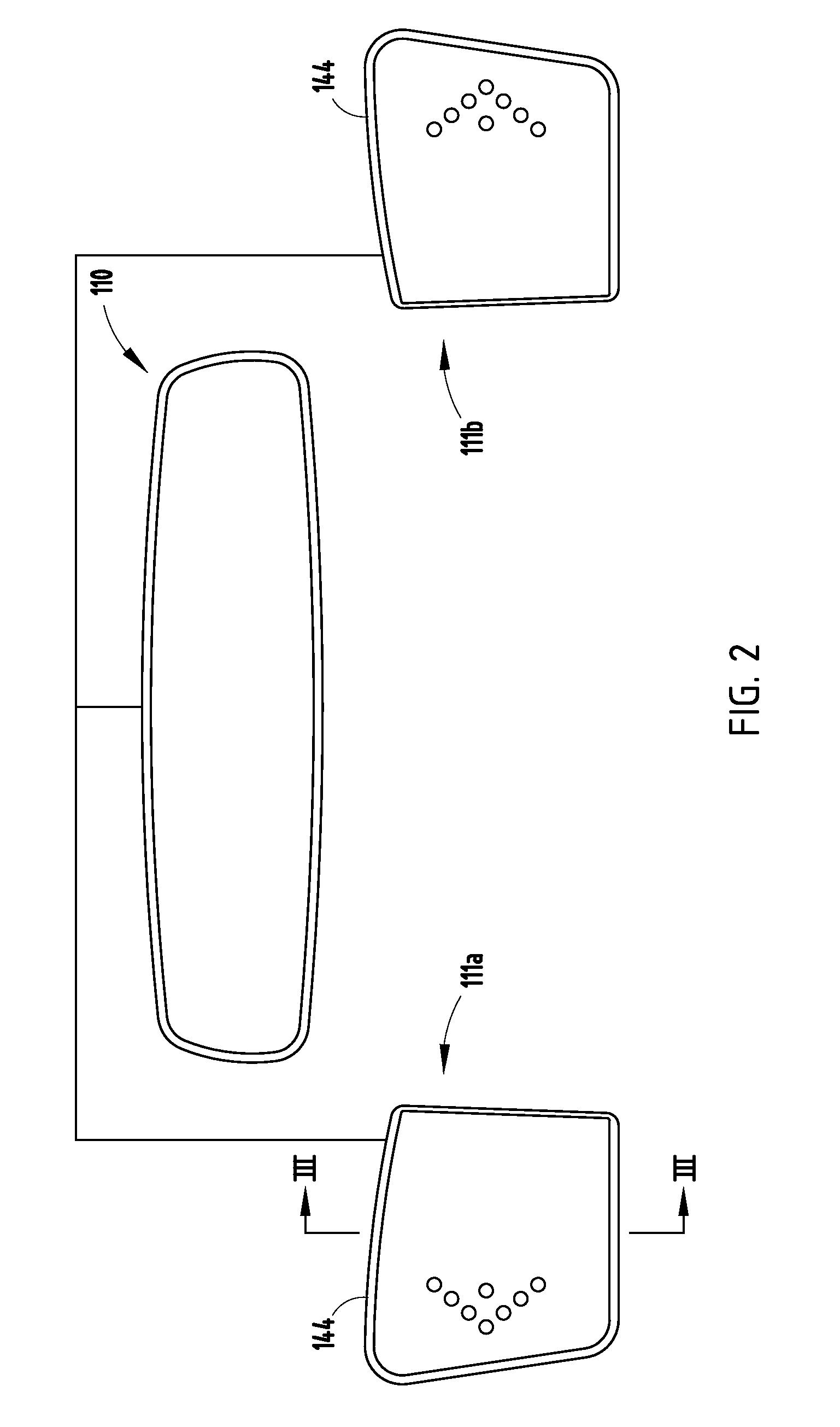Electro-optical element including metallic films and methods for applying the same
a technology of optical elements and metallic films, applied in the field of electrochromic elements, can solve the problems of limited conductivity of such systems, no group had commercial success, and insufficient reflectivity
- Summary
- Abstract
- Description
- Claims
- Application Information
AI Technical Summary
Benefits of technology
Problems solved by technology
Method used
Image
Examples
example 1
[0064]Inkjet Silver Conductor AG-IJ-G-100-S1 ink from Cabot Printable Electronics and Displays (Albuquerque, N. Mex.) was applied to flat, 1.6 mm thick, soda lime glass using a JetDrive III driver and MJ-AB-01 40 μm inkjet head both obtained from MicroFab Technologies (Plano, Tex.). Printing parameter settings were typical for inkjet printing. After the conductive ink was printed, separate samples were cured in a convection oven or kiln at temperatures of 200, 300, 400, and 500° C. for 20 minutes. The thickness of the cured films was measured using a profilometer (Dektek) and bulk resistivity was calculated.
[0065]
Bulk ResistivityCureCureThickness (μm)(μΩ· cm)Temperature (° C.)Time (min)(avg. of 3)(avg. of 3)200200.8710.63300201.064.24400200.862.90500201.003.11
[0066]The adhesion between the film and the substrate was evaluated by a tape peel test. After curing, adhesive tape was applied to the film and removed with a peeling action. A rating of 1 indicates the film was removed by the...
example 2
[0068]Silverjet DGH 50LT-25CIA ink from Advanced Nano Products (Seoul, Korea) was applied to flat, 1.6 mm thick, soda lime glass using similar apparatus and printing parameter settings as Example 1. After the conductive ink was printed, separate samples were cured in a convection oven or kiln at temperatures of 250, 350, 450, and 560° C. for 20 minutes. The thickness of the cured films was measured using a profilometer (Dektek) and bulk resistivity was calculated.
[0069]
Bulk ResistivityCureCureThickness (μm)(μΩ· cm)Temperature (° C.)Time (min)(avg. of 3)(avg. of 3)250203.4511.64350203.0610.69450202.509.65560201.483.34
[0070]The adhesion between the film and the substrate was evaluated by a tape peel test as described in Example 1. A rating of 1 indicates the film was removed by the tape. A rating of 5 indicates the film was not affected by the tape removal. Intermediate numbers are assigned by how much of the film is removed by the tape removal.
[0071]
Cure Temperature (° C.)Cure Time (...
example 3
[0072]Silverjet DGH 50HT-50CIA ink from Advanced Nano Products (Seoul, Korea) was applied to flat, 1.6 mm thick, soda lime glass using similar apparatus and printing parameter settings as Example 1. After the conductive ink was printed, separate samples were cured in a convection oven or kiln at temperatures of 250, 350, 450, and 560° C. for 20 minutes. The thickness of the cured films was measured using a profilometer (Dektek) and bulk resistivity was calculated.
[0073]
Bulk ResistivityCureCureThickness (μm)(μΩ· cm)Temperature (° C.)Time (min)(avg. of 3)(avg. of 3)250205.3818.17350205.2917.23450205.3117.89560203.287.39
[0074]The adhesion between the film and the substrate was evaluated by a tape peel test as described in Example 1. A rating of 1 indicates the film was removed by the tape. A rating of 5 indicates the film was not affected by the tape removal. Intermediate numbers are assigned by how much of the film is removed by the tape removal.
[0075]
Cure Temperature (° C.)Cure Time ...
PUM
| Property | Measurement | Unit |
|---|---|---|
| bulk resistivity | aaaaa | aaaaa |
| bulk resistivity | aaaaa | aaaaa |
| resistivity | aaaaa | aaaaa |
Abstract
Description
Claims
Application Information
 Login to View More
Login to View More - R&D
- Intellectual Property
- Life Sciences
- Materials
- Tech Scout
- Unparalleled Data Quality
- Higher Quality Content
- 60% Fewer Hallucinations
Browse by: Latest US Patents, China's latest patents, Technical Efficacy Thesaurus, Application Domain, Technology Topic, Popular Technical Reports.
© 2025 PatSnap. All rights reserved.Legal|Privacy policy|Modern Slavery Act Transparency Statement|Sitemap|About US| Contact US: help@patsnap.com



